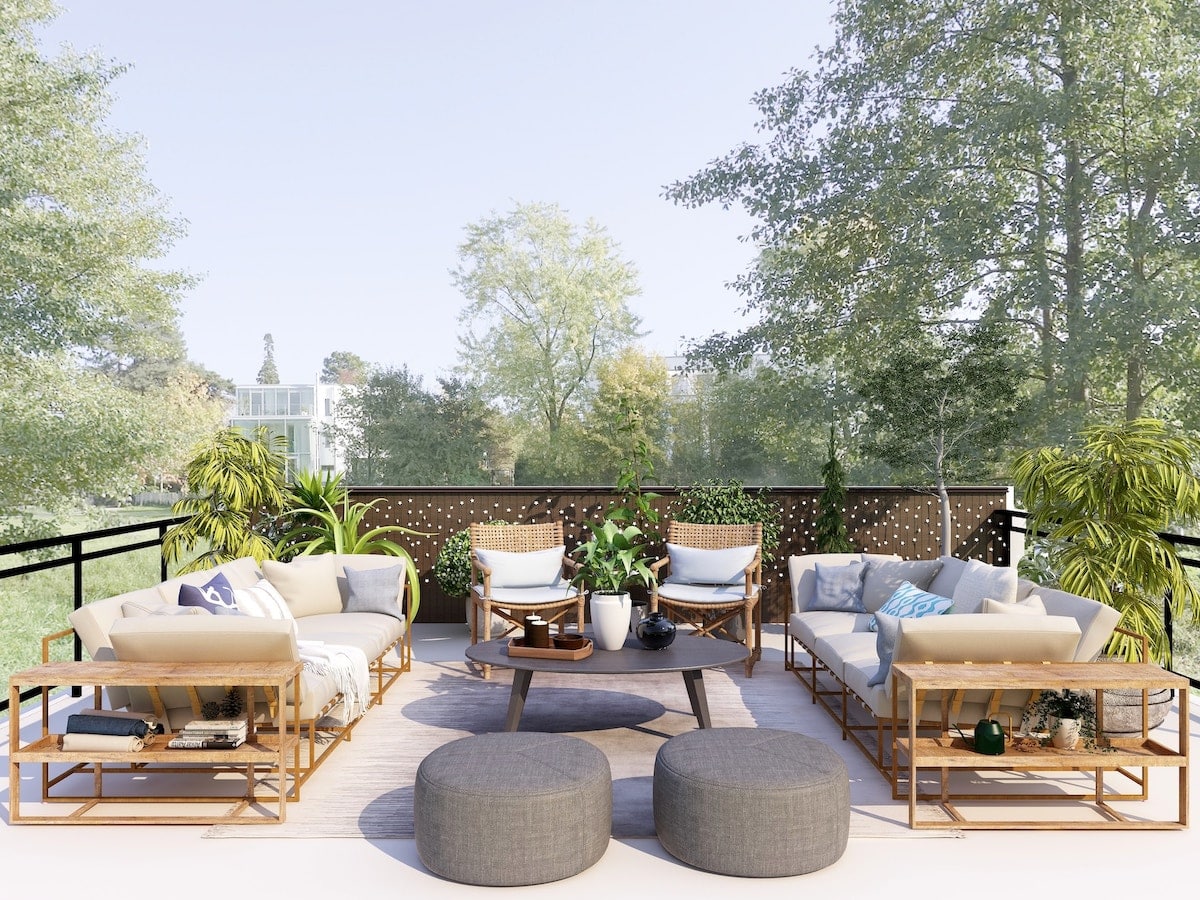Table of Contents
Outdoor furniture is an integral part of many homes, providing a place to relax, entertain, and enjoy nature. However, like all possessions, it requires proper care and maintenance to ensure its longevity. By understanding the specific needs of your outdoor pieces and taking preventative measures, you can enjoy them for many years to come.
The Impact of Weather on Outdoor Furniture
One of the primary concerns with outdoor furniture is the damage caused by various weather conditions. Rain can lead to mold and mildew, while UV rays can fade and weaken materials. Winter frost can damage joints and fastenings, and strong winds can send lightweight pieces flying, leading to breakage or loss.
To counter these problems, it’s essential to understand the specific vulnerabilities of each type of furniture material:
- Wood: Can warp, crack, or rot when exposed to moisture.
- Metal: Rust and corrosion are common, especially if the furniture is scratched or chipped.
- Plastic: Prolonged sun exposure can cause fading and brittleness.
- Fabric and Upholstery: Susceptible to UV damage, mold, and mildew.
Using Patio Covers to Shield Your Investment
Patio covers are invaluable tools in the fight against weather damage. Not only do they shield your furniture from direct sun, rain, and snow, but they also help mitigate temperature fluctuations that can cause materials to expand and contract.
Benefits of Patio Covers:
- Protection from UV rays: Reducing the risk of fading and degradation.
- Moisture resistance: Decreasing the chances of mold, mildew, and rot.
- Temperature moderation: Reducing the wear and tear caused by expansion and contraction.
- Dust and debris shielding: Keeping your furniture clean and ready for use.
However, it’s crucial to choose covers that fit well and are made of durable, weather-resistant materials. Poorly fitted or low-quality covers can trap moisture, defeating their purpose and potentially causing more harm than good.
Routine Maintenance and Cleaning
Even with the best preventive measures, outdoor furniture will require regular cleaning. Dirt and debris can scratch surfaces, and unchecked mold or mildew can become health hazards.
Cleaning Tips:
- Wood: Use a mild soap and water solution, scrubbing gently with a soft brush. Rinse thoroughly and let air dry.
- Metal: Wipe down with a damp cloth. For tougher spots, use mild soap. Ensure it’s thoroughly dried to prevent rust.
- Plastic: Mild detergent and water usually suffice. For stubborn stains, baking soda can work wonders.
- Fabric: Vacuum loose debris, then spot clean with a mild detergent. Avoid bleach unless explicitly recommended by the manufacturer.
Seasonal Storage: A Prudent Approach
In regions with harsh winters, it might be wise to store certain pieces indoors. If space is an issue, consider using storage solutions like sheds or outdoor storage bins.
Data Table: Storage Recommendations Based on Furniture Material
| Material | Storage Temperature Range | Additional Tips |
| Wood | Above freezing | Keep off damp floors |
| Metal | Any | Oil hinges/joints |
| Plastic | Above freezing | Avoid stacking |
| Fabric | Dry, above freezing | Store in containers |
Material-Specific Protective Measures
Different materials may require additional protective measures:
- Wood: Consider applying a sealant or water repellent annually. This not only helps protect against moisture but also provides a barrier against UV rays.
- Metal: If chips or scratches appear, touch them up with paint to prevent rust. Periodically check for rust spots and treat them before they spread.
- Plastic: While it’s low-maintenance, it’s a good idea to store plastic furniture out of direct sunlight when not in use.
- Fabric: UV fabric protectors can add an extra layer of sun defense. Also, during long periods of disuse, bring cushions indoors.
Outdoor furniture represents a significant investment for most homeowners. By understanding its vulnerabilities and taking proactive measures, you can ensure your pieces remain functional and attractive for many seasons. Whether it’s the strategic use of patio covers, regular cleaning, or material-specific care, a little effort can prolong the life of your furniture considerably.


